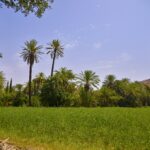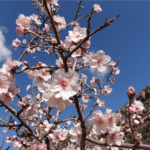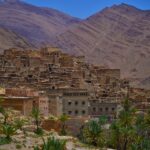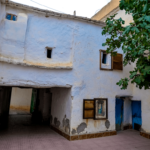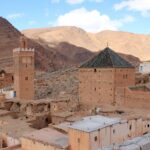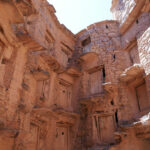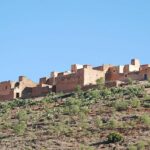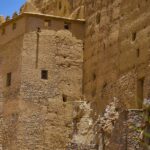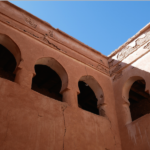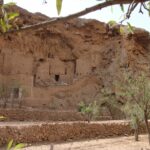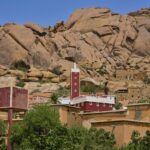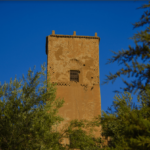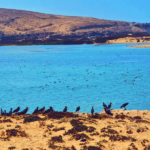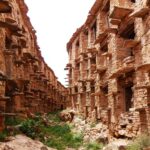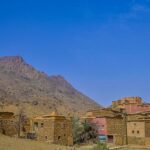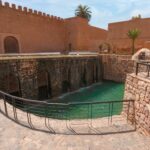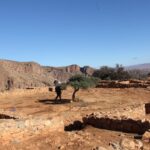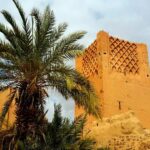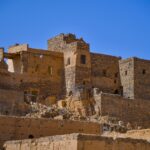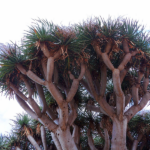The igoudars of the region of Souss Massa are jewel architectural relics that are the bearers of the culture of Morocco. Positioned strategically in mountainous areas, these ancient granaries served a dual purpose: conservation and fortification. In such a way, major resources like cereals, oil, and important documents could be preserved against enemy strikes. Carefully conserved, these buildings exhibit intelligent architecture and building patterns that are insightful about the security and welfare requirements of society. Going by these Igoudars brings the sensation of the tactical strategies that the realities of past Moroccan societies required, whereby architecture was used for providing the necessities of life and building social bonds in harsh environments.
The Architectural and Societal Significance of Igoudars
The craftsmanship of the Moroccan Igoudars is noteworthy in the way that the materials used are in perfect harmony with the landscapes in which they are built, such as argan wood, thuja, and local stone. In this way, their architecture expresses a deep connection with the surroundings. It is stain-resistant, water-resistant, and perfect for outdoor use, ensuring durability and natural camouflage as well as the creativity of the creators. The design of the wigwams has a unique aspect, as it comprises miniature doors and a tree trunk retaining their original shape for either a column or stairs, which reveals the builders prowess. Such architectural attributes stand for their useful and beautiful functions, and at the same time, they become not just the granaries with high practical value but the works of art reflecting strong cultural ties between the culture and the environment.
The Role of the Lamine
The governing of “igoudars” justifies that communities’ organizational structure is quite developed and relies on each other, as well as that there are shared responsibilities. The main mechanism of this system is the “lamine” role, which means taking a part of the harvest as remuneration for the mercy act of watching over the community. This duty does not only involve supervision; the lamine also has the privilege of performing vital tasks like warding off the pest menace that may wreak havoc on the store’s contents. It becomes obvious that the engagement model as such is what unites the people in their effort to survive and also as something that they have developed through the ages as a part of their cultural practice, where every community member contributes for the good of all.
Tourist Attractions
You have the opportunity to tour the breathtaking “igoudars” of Imchguigueln and Afella Ouzaghar, a mere 60 kilometers from Agadir along the Aït Baha route; these villages are open to visitors, so you can get to know Moroccan culture deeply. These old granaries are regarded for their traditional harvests, for instance, from argan woods and thuja, which they use to blend with the landscape of their surroundings. Their cozy chapels with the mini doors and construction from local stone not only safeguard authenticity but also make them more attractive to foreigners. These sites particularly attract visitors who have an interest in exploring Morocco’s rich heritage, through which they can observe the daily life of the region, characterized by the invention of intelligent architectural practices.
Conservation Efforts
Conservation programs for igoudars in Morocco specifically focus on retaining the historical aspects of these areas while responding to the ever-growing demand for tourism. A harmonious balance of conservation and accessibility helps these spectacular structures avoid the risk of cultural distortion. Such schemes are not merely an instrument of local heritage conservation but also offer sustainable growth in the area by strengthening the local economy. Through different cultural tourism initiatives that appreciate Moroccan traditions, the communities will be empowered to take advantage of and offer enriching experiences for visitors. Thanks to the combined efforts of locals, authorities, and tourism on the one hand, these activities both safeguard the past and, at the same time, lay the foundation for a future where heritage and tourism join forces, bringing up the colorful life that makes up Morocco’s cultural heritage.

